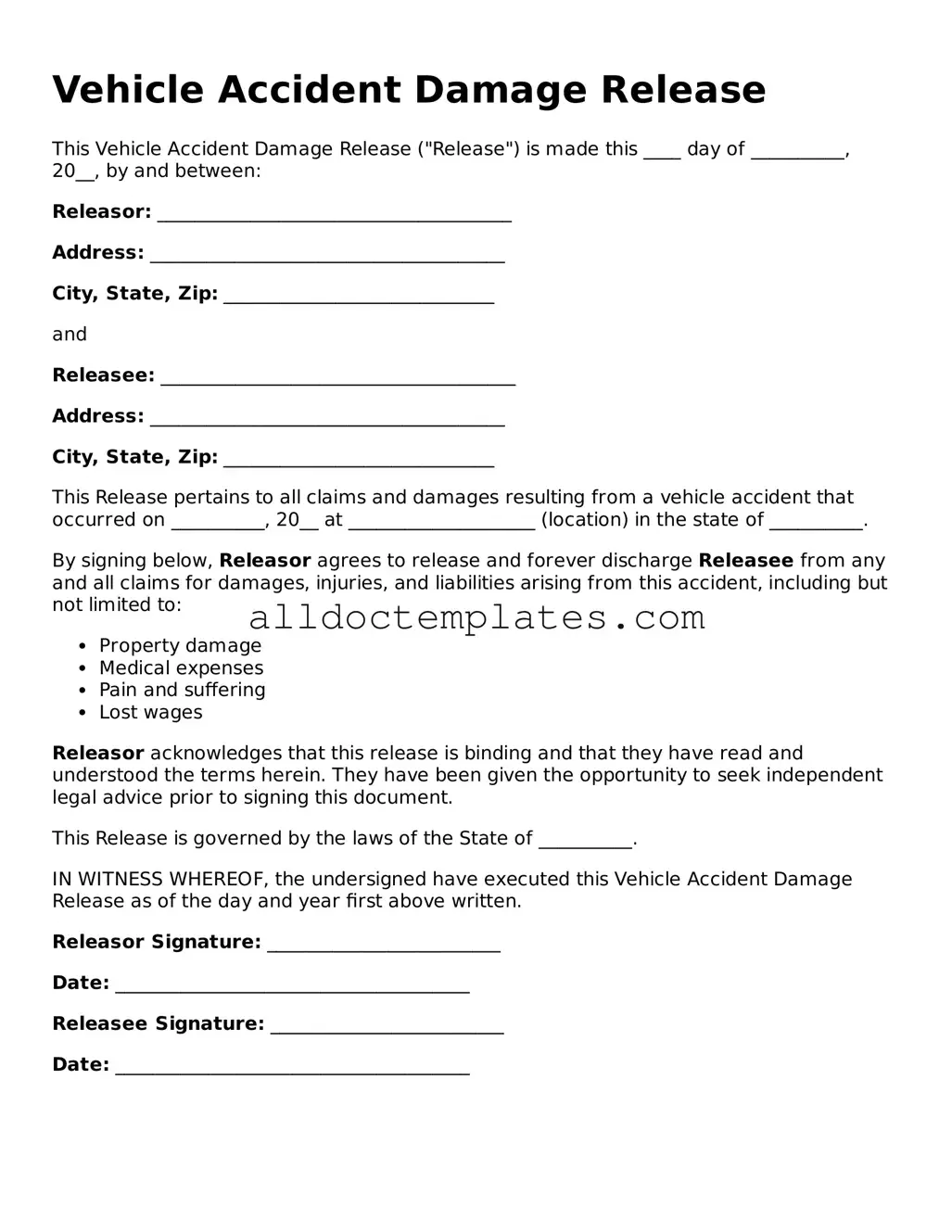Vehicle Accident Damage Release
This Vehicle Accident Damage Release ("Release") is made this ____ day of __________, 20__, by and between:
Releasor: ______________________________________
Address: ______________________________________
City, State, Zip: _____________________________
and
Releasee: ______________________________________
Address: ______________________________________
City, State, Zip: _____________________________
This Release pertains to all claims and damages resulting from a vehicle accident that occurred on __________, 20__ at ____________________ (location) in the state of __________.
By signing below, Releasor agrees to release and forever discharge Releasee from any and all claims for damages, injuries, and liabilities arising from this accident, including but not limited to:
- Property damage
- Medical expenses
- Pain and suffering
- Lost wages
Releasor acknowledges that this release is binding and that they have read and understood the terms herein. They have been given the opportunity to seek independent legal advice prior to signing this document.
This Release is governed by the laws of the State of __________.
IN WITNESS WHEREOF, the undersigned have executed this Vehicle Accident Damage Release as of the day and year first above written.
Releasor Signature: _________________________
Date: ______________________________________
Releasee Signature: _________________________
Date: ______________________________________
